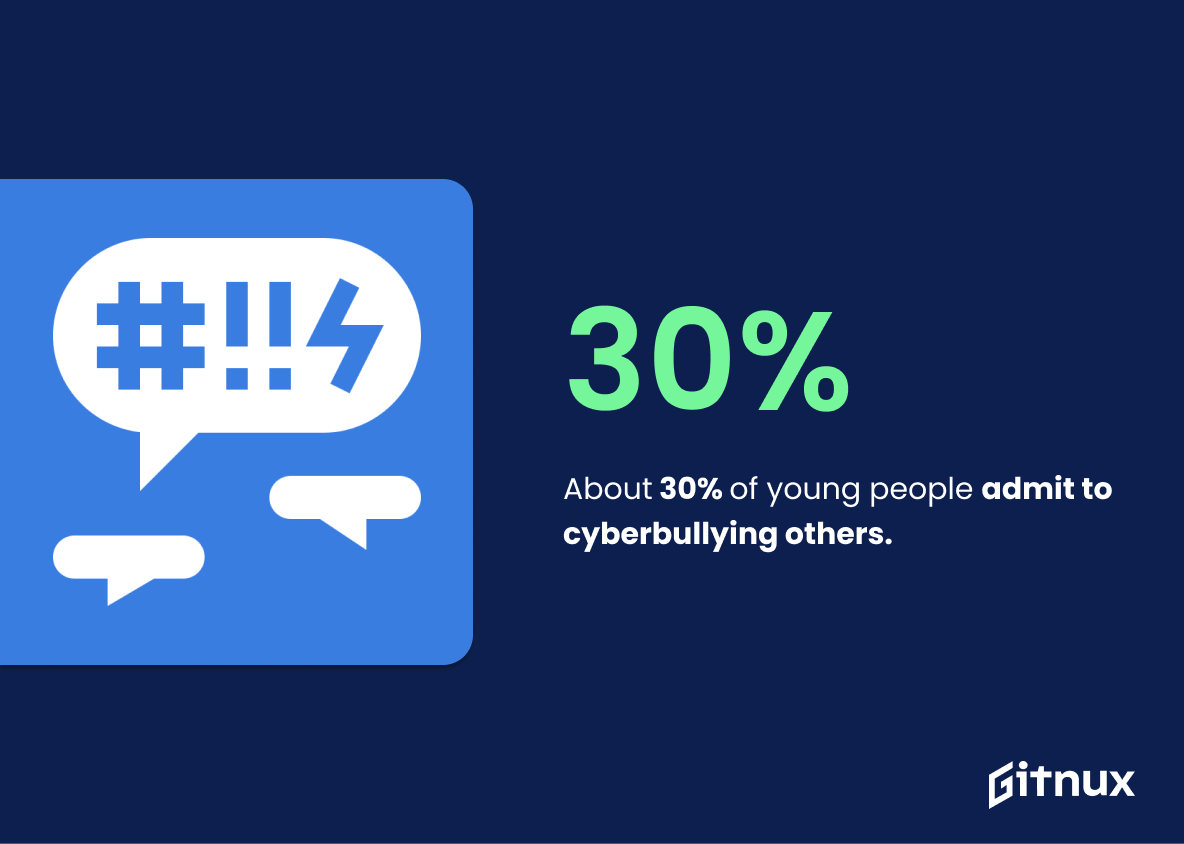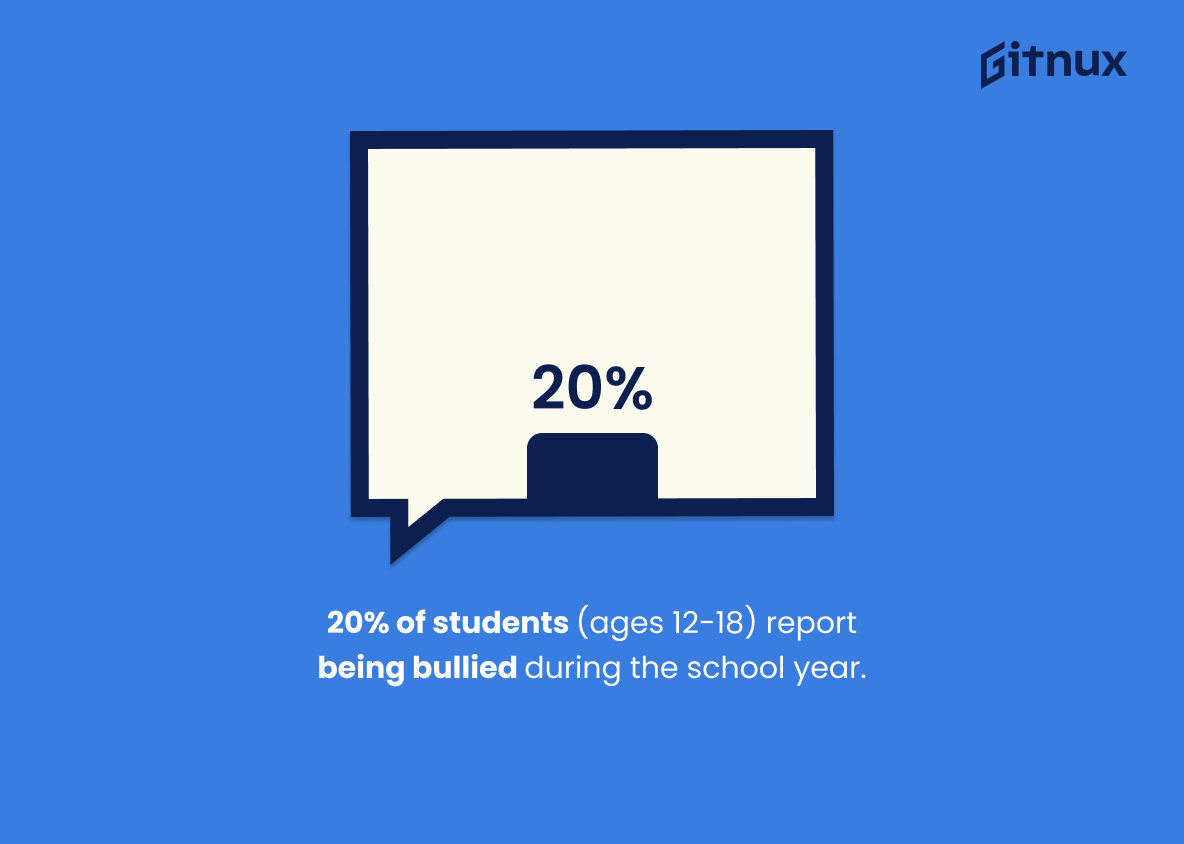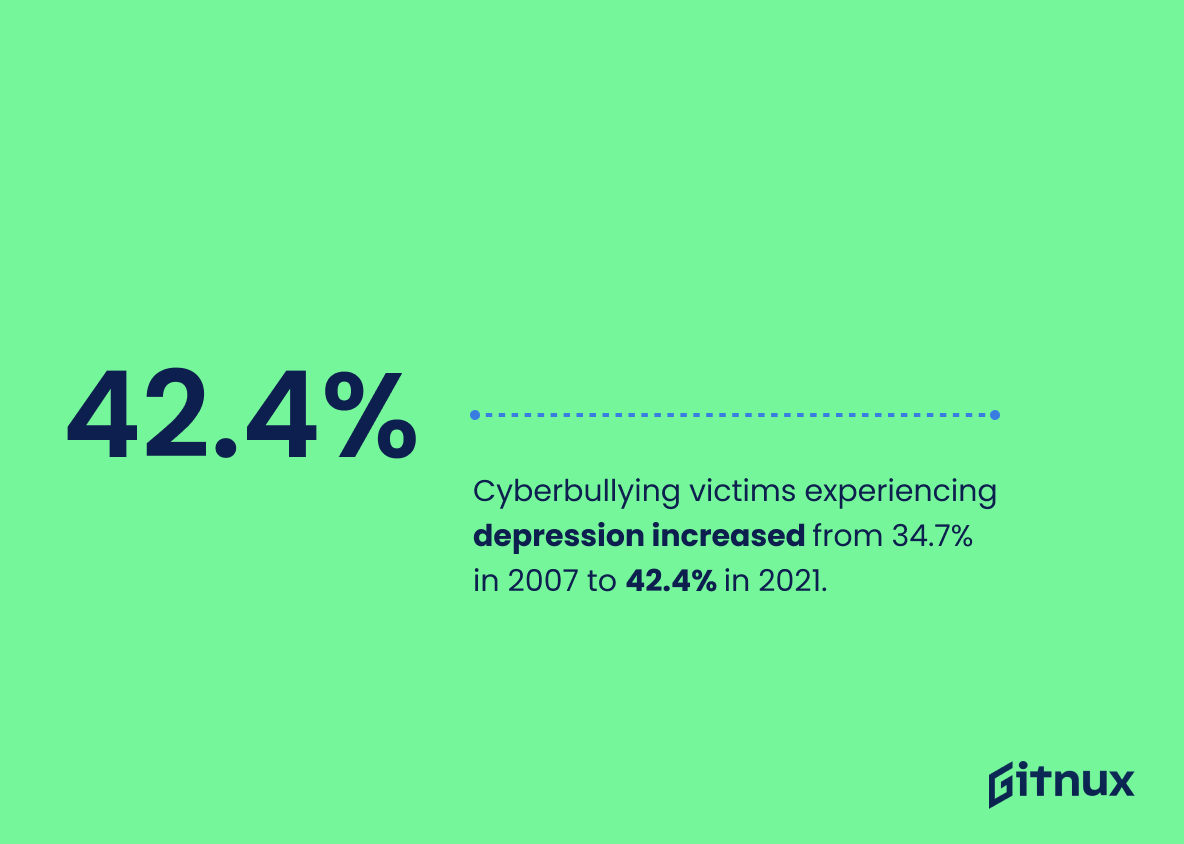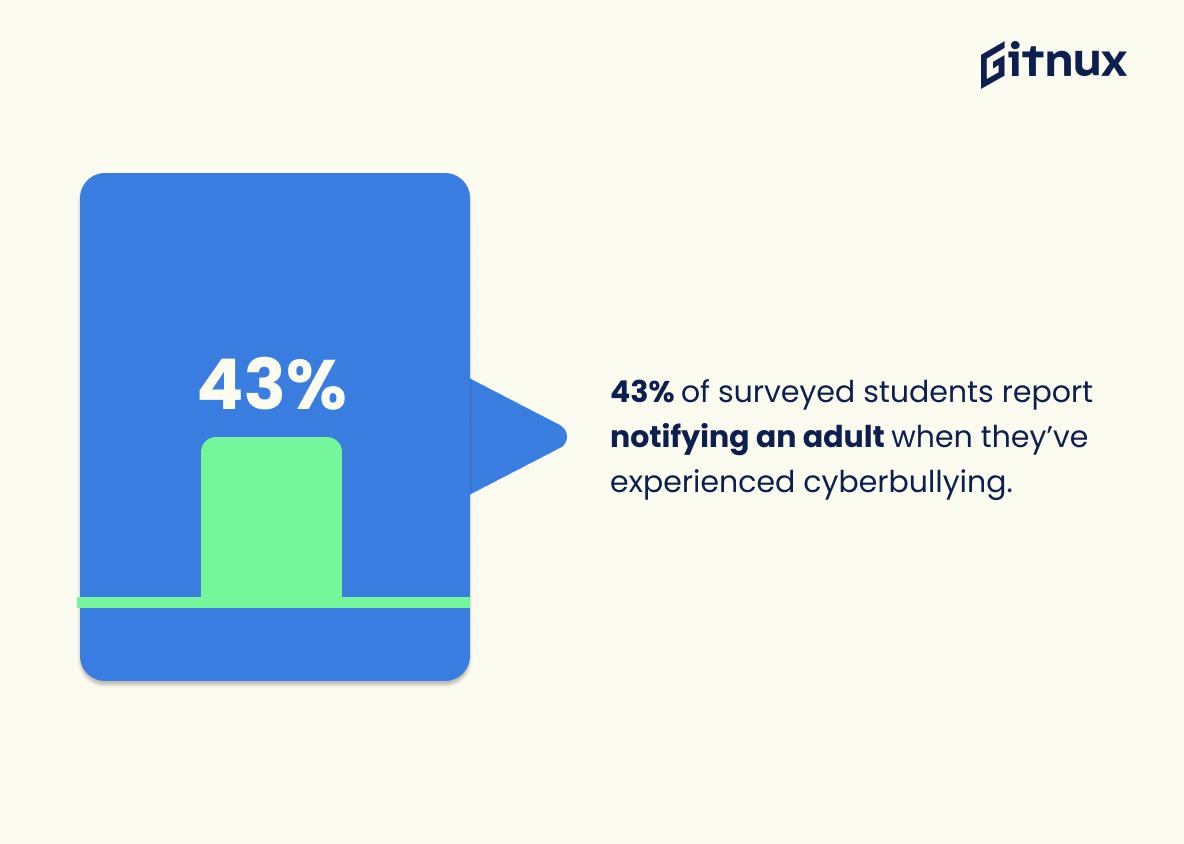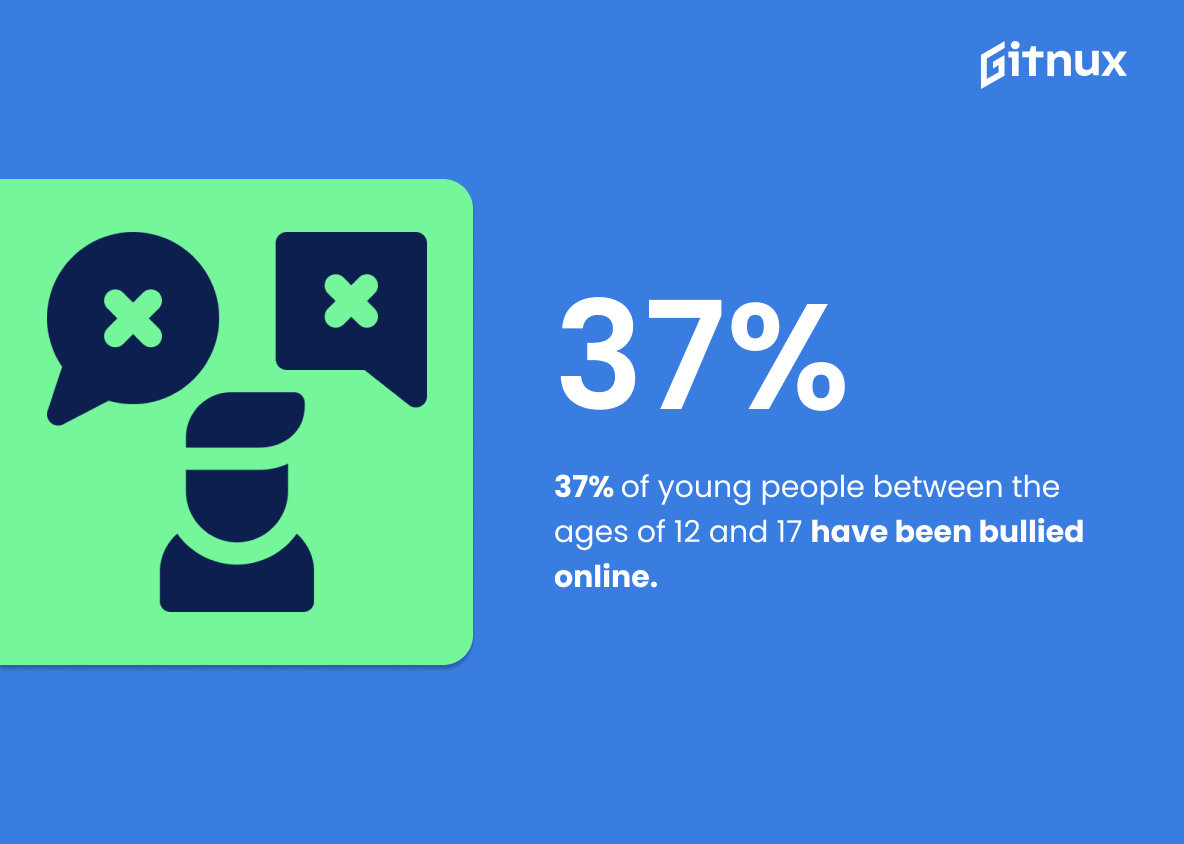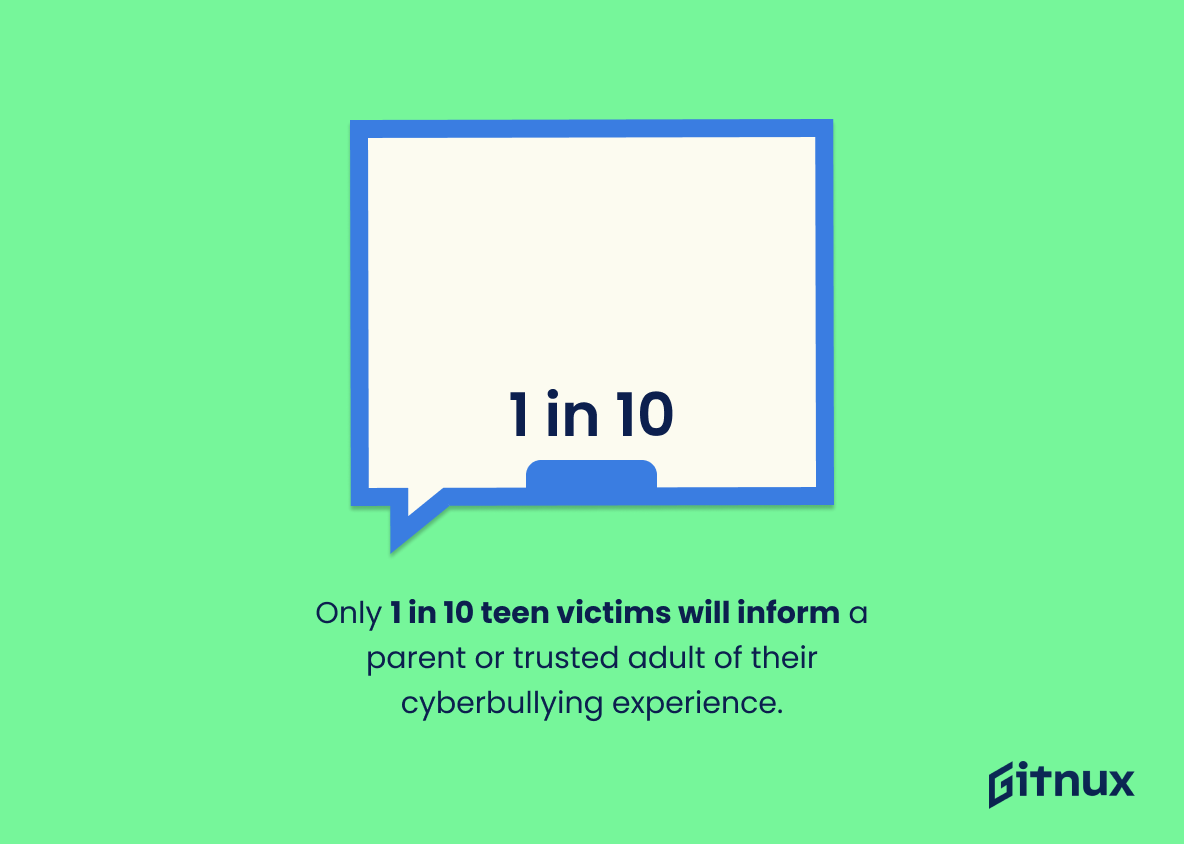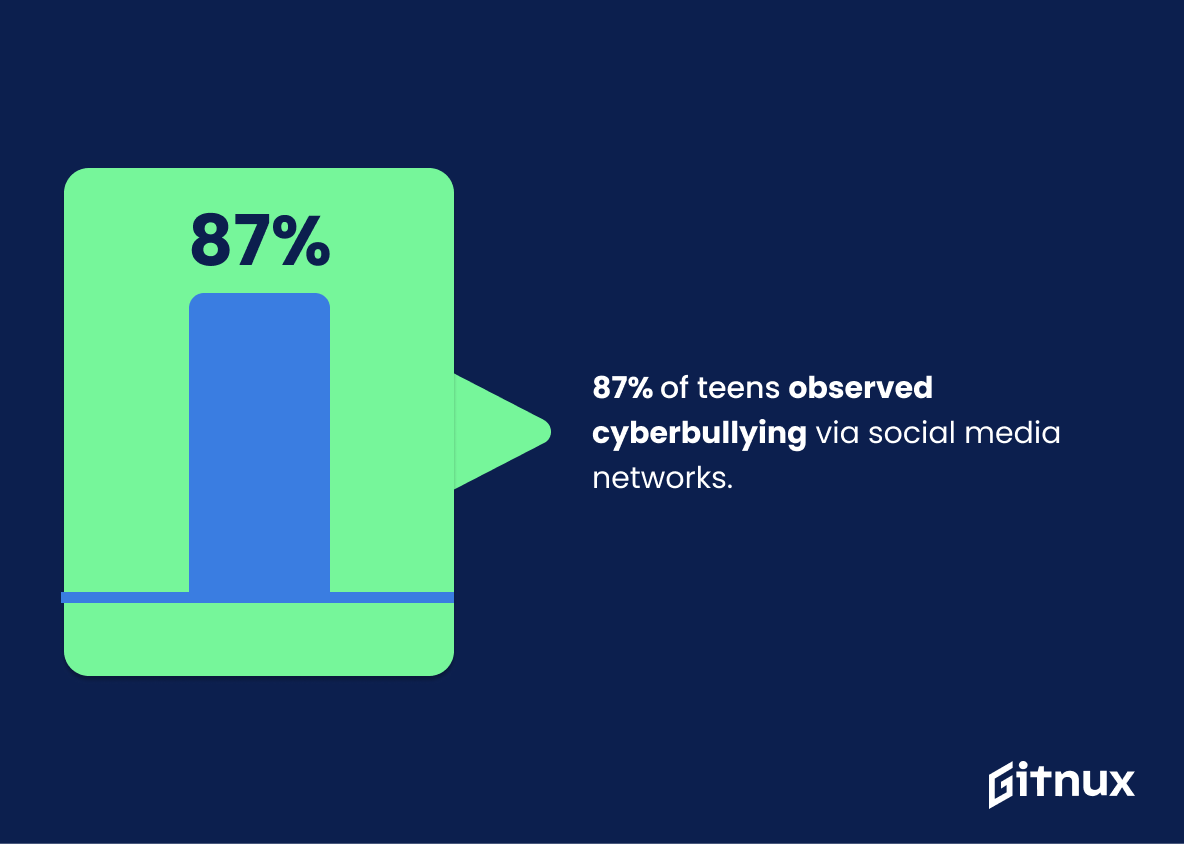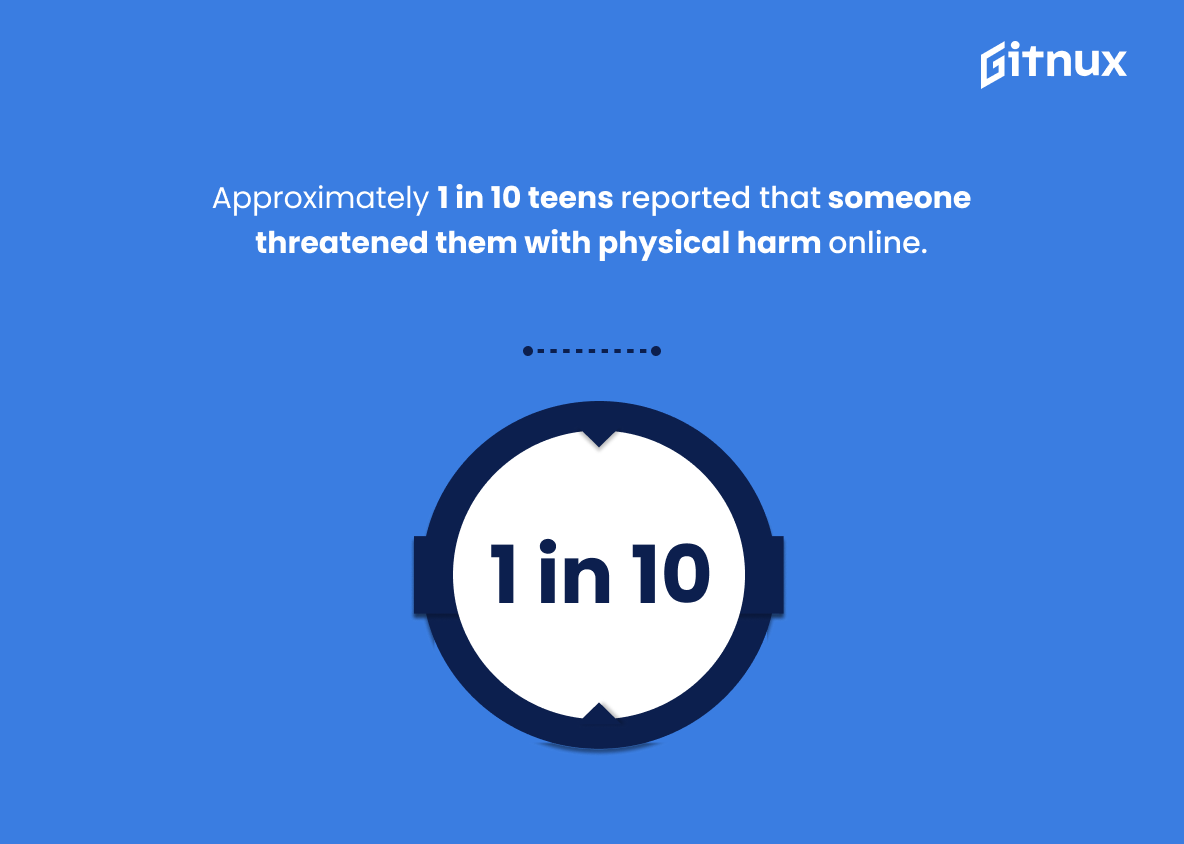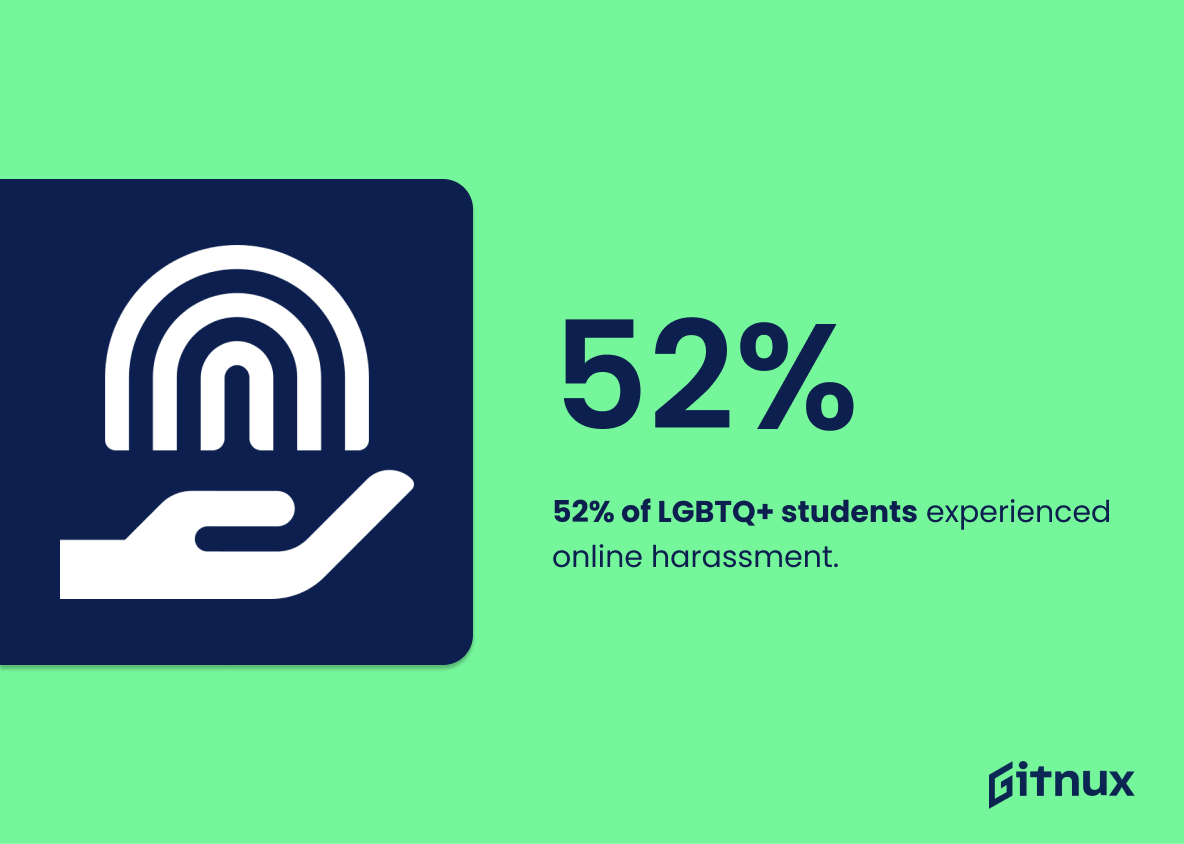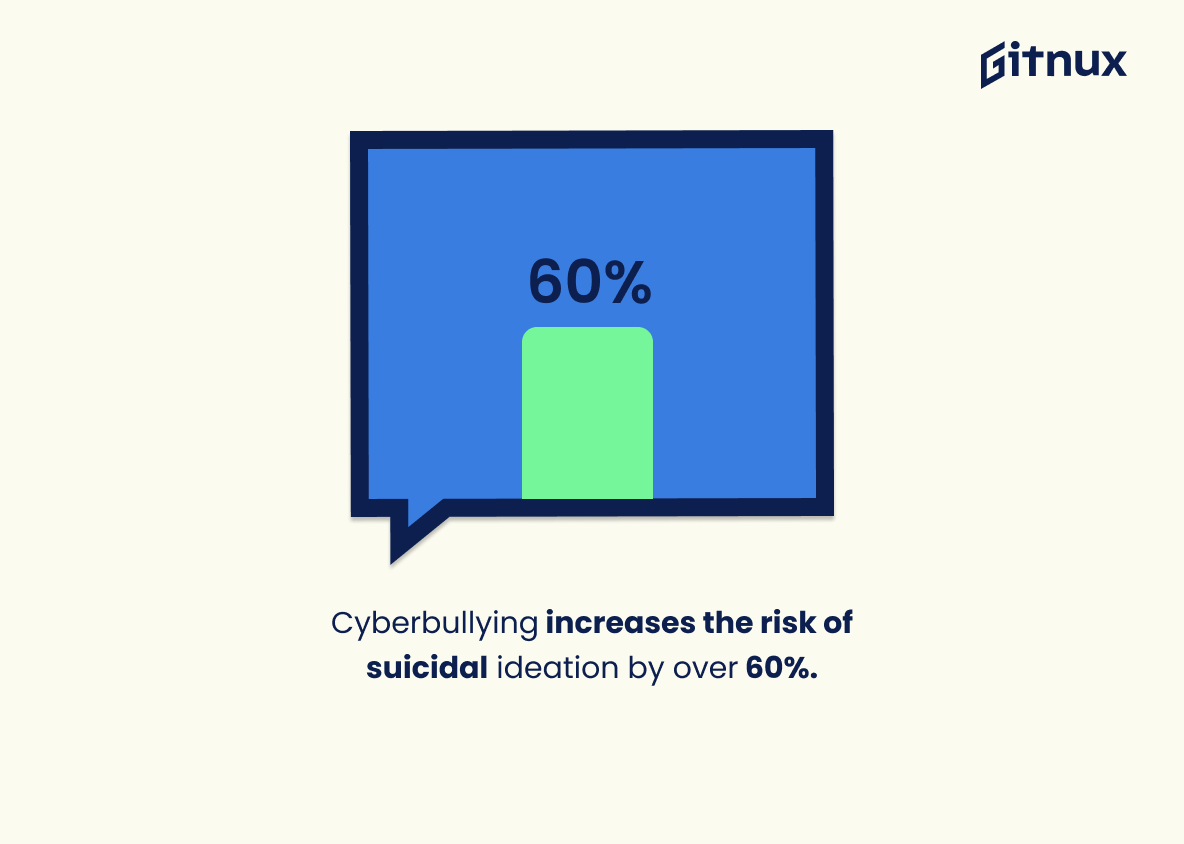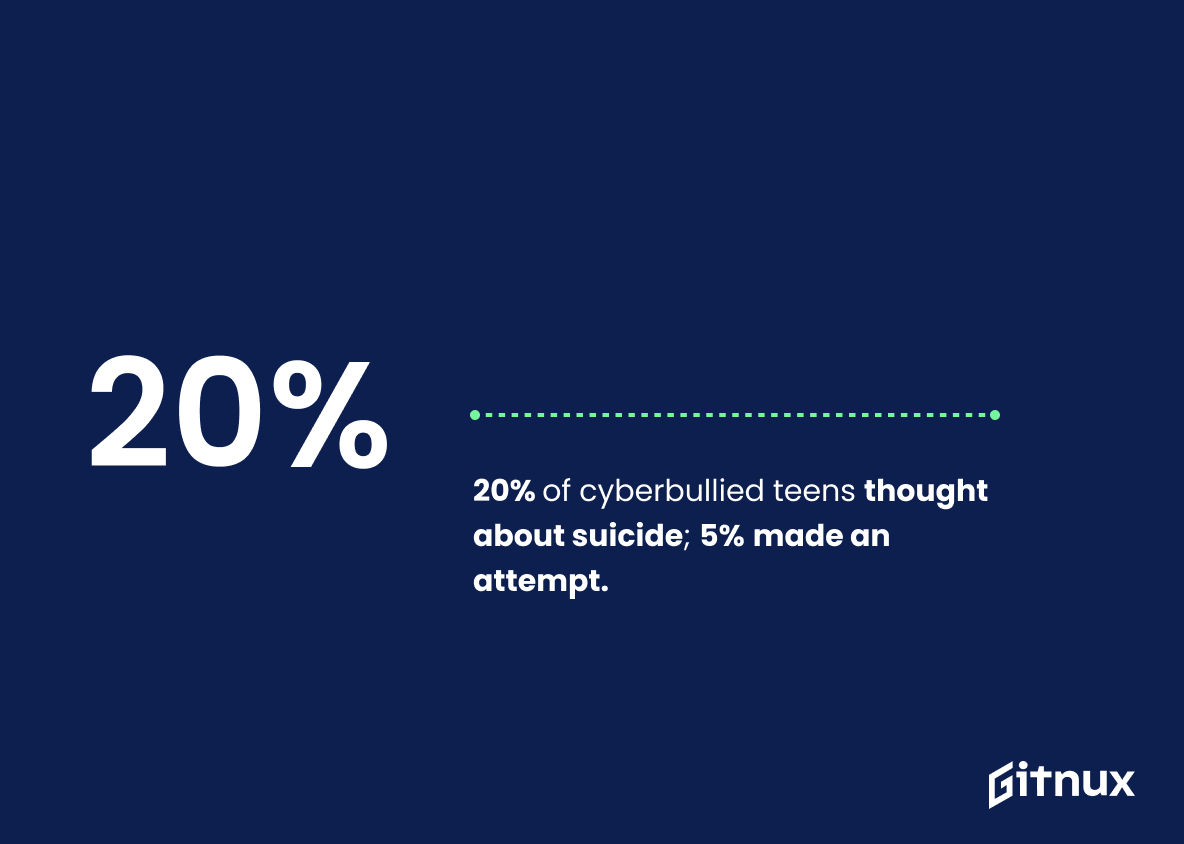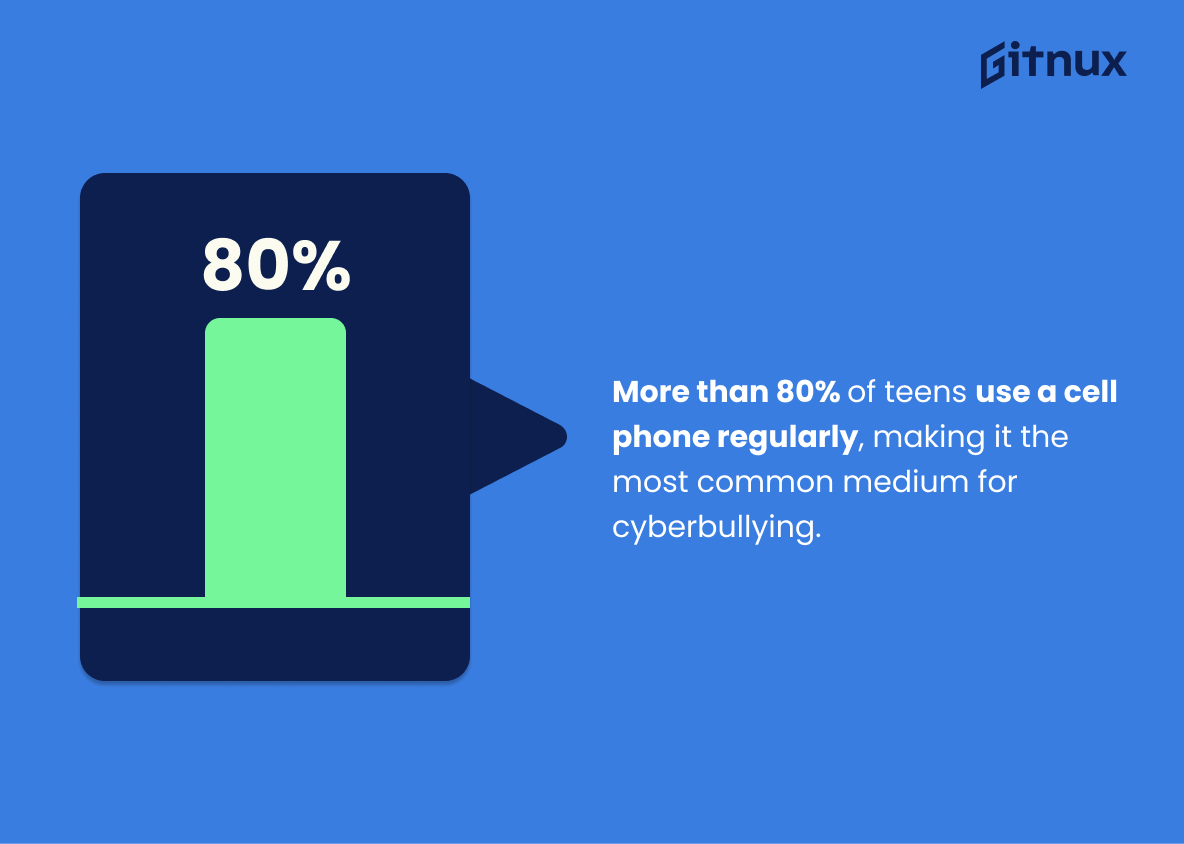Cyberbullying is a serious issue that affects millions of adolescents and teens around the world. According to recent statistics, over 50% of young people have been bullied online, with 25% reporting being repeatedly targeted via their mobile device or the internet. Additionally, 30% admit to cyberbullying others while 20% report being bullied during the school year.
The effects of cyberbullying can be devastating; victims are two times more likely to attempt suicide than those who are not affected by it. Furthermore, depression rates among these individuals has increased from 34.7 in 2007 to 42.4 in 2021 according to research conducted by The Pew Research Center for Internet & Technology (2021).
It’s important for parents and educators alike to understand how prevalent this problem is so they can take steps towards preventing it from happening as well as providing support when needed – only 43 percent of surveyed students reported notifying an adult when they’ve experienced cyberbullying (DoSomething Organization 2017) while 19 percent of 15-year-olds have experienced online bullying (Child Trends 2014). 37 percent between 12 and 17 years old were also found vulnerable due Cyber Bulling attacks(Internet Safety 101 2018), but even worse: Only 1 out 10 teen victims will inform a parent or trusted adult about what happened.(National Centre Against Bulling 2019) In Australia 18 %of young people aged 12–17 reported experiencing some form female students were more likely experience such kind attack 38 .5%, male student 34%. 87 %teenagers observed someone else getting bully through social media networks(Affilorama 2016 )and 67 %students who got victimised on line had faced traditional bullying too.(Juneau Empire 2020 ). It was further revealed that 52 %LGBTQ+ youth suffered harassment on line ,which increases risk suicidal ideation 60%. Moreover 20 per cent thought about committing suicide 5per cent made attempts do same.( National Institute Health 2015 ). Finally 80 plus percentage teenagers use cell phone regularly making most common medium used carry out such activities Affilorama 2016).
Cyberbullying Suicide Statistics Overview
About 30% of young people admit to cyberbullying others.
This statistic is a stark reminder of the prevalence of cyberbullying in our society, and serves as a call to action to address this issue. It highlights the need to take steps to prevent cyberbullying and its potentially devastating consequences, such as suicide. It is a reminder that cyberbullying is a serious problem that needs to be addressed, and that it is not something to be taken lightly.
20% of students (ages 12-18) report being bullied during the school year.
This statistic is a stark reminder of the prevalence of bullying among students, and serves as a reminder of the potential consequences of cyberbullying. It is a reminder that cyberbullying can have serious, long-term effects on the mental health of those affected, and can even lead to suicide in some cases. This statistic is a call to action to take steps to prevent cyberbullying and protect our youth.
Cyberbullying victims experiencing depression increased from 34.7% in 2007 to 42.4% in 2021.
This statistic is a stark reminder of the devastating effects of cyberbullying, as it shows a significant increase in the number of victims experiencing depression over the past 14 years. It is a clear indication that cyberbullying is a growing problem that needs to be addressed, and that the consequences of cyberbullying can be severe and long-lasting. This statistic is a call to action for parents, educators, and policy makers to take steps to prevent cyberbullying and protect vulnerable individuals from its harmful effects.
43% of surveyed students report notifying an adult when they’ve experienced cyberbullying.
This statistic is a crucial indicator of the effectiveness of cyberbullying prevention efforts. It shows that a significant portion of students are taking the initiative to report cyberbullying when they experience it, which is a positive sign that more people are becoming aware of the dangers of cyberbullying and taking steps to protect themselves. This statistic is especially important in the context of cyberbullying suicide statistics, as it suggests that more students are taking the necessary steps to prevent cyberbullying from escalating to a point where it could lead to suicide.
19% of 15-year-olds have experienced online bullying.
This statistic is a stark reminder of the prevalence of cyberbullying among young people, and serves as a warning of the potential consequences of such behavior. It highlights the need for greater awareness and education around cyberbullying, as well as the need for more effective strategies to prevent and address it. It also underscores the importance of understanding the impact of cyberbullying on the mental health of young people, and the need to provide support and resources to those affected.
37% of young people between the ages of 12 and 17 have been bullied online.
This statistic is a stark reminder of the prevalence of cyberbullying and its devastating effects. It highlights the need for greater awareness and education about the dangers of cyberbullying, as well as the importance of providing support for those who have been affected by it. It also serves as a reminder of the urgent need to take action to prevent cyberbullying and its associated risks, such as suicide.
Only 1 in 10 teen victims will inform a parent or trusted adult of their cyberbullying experience.
This statistic is a stark reminder of the severity of cyberbullying and its effects on teens. It highlights the fact that many teens are not comfortable enough to reach out to a parent or trusted adult for help, and instead are suffering in silence. This is especially concerning when considering the potential for cyberbullying to lead to suicide, as it means that many teens are not getting the help they need in time.
Female students are more likely to experience cyberbullying (38.5%) than male students (34%).
This statistic is a stark reminder of the disproportionate impact cyberbullying has on female students. It highlights the need for greater awareness and prevention of cyberbullying, particularly among female students, in order to reduce the risk of cyberbullying-related suicide.
87% of teens observed cyberbullying via social media networks.
This statistic is a stark reminder of the prevalence of cyberbullying in our society, particularly among teens. It highlights the need for greater awareness and education about the dangers of cyberbullying, as well as the need for more effective strategies to combat it. In the context of blog post about Cyberbullying Suicide Statistics, this statistic serves to emphasize the potentially devastating consequences of cyberbullying, and the urgent need to address it.
Approximately 1 in 10 teens reported that someone threatened them with physical harm online.
This statistic is a stark reminder of the prevalence of cyberbullying and its potential to cause physical harm. It highlights the need for greater awareness and education around the issue, as well as the need for more effective strategies to prevent and address cyberbullying.
52% of LGBTQ+ students experienced online harassment.
This statistic is a stark reminder of the prevalence of cyberbullying among LGBTQ+ students, and how it can have a devastating impact on their mental health. It is a reminder that cyberbullying is a serious issue that needs to be addressed, and that LGBTQ+ students are particularly vulnerable to its effects. It is a call to action to take steps to protect LGBTQ+ students from cyberbullying and to provide them with the support they need to cope with its effects.
Cyberbullying increases the risk of suicidal ideation by over 60%.
This statistic is a stark reminder of the devastating effects of cyberbullying, as it highlights the fact that those who experience it are more than 60% more likely to have suicidal thoughts. It is a powerful reminder of the need to take cyberbullying seriously and to take steps to prevent it from occurring.
20% of cyberbullied teens thought about suicide; 5% made an attempt.
This statistic is a stark reminder of the devastating effects of cyberbullying. It highlights the fact that cyberbullying can have a serious impact on the mental health of teens, with a significant proportion of those affected considering suicide and a small but significant number actually attempting it. This statistic serves as a powerful reminder of the need to take cyberbullying seriously and to take steps to prevent it.
More than 80% of teens use a cell phone regularly, making it the most common medium for cyberbullying.
This statistic is a stark reminder of the prevalence of cyberbullying, and how it has become a major issue in the lives of teens. It highlights the need for greater awareness and education about the dangers of cyberbullying, and the importance of taking steps to prevent it. It also serves as a reminder of the potential consequences of cyberbullying, including suicide, and the need to take action to protect vulnerable teens.
Conclusion
The statistics presented in this blog post demonstrate the prevalence of cyberbullying and its devastating effects on young people. Over 50% of adolescents and teens have been bullied online, with 25% reporting being repeatedly targeted via their mobile device or the internet. Additionally, 30% admit to bullying others while 20% report being bullied during school year. Victims are two times more likely to attempt suicide than those who are not victims, and depression rates among victims has increased from 34.7%-42.4%. Furthermore, only 1 in 10 teen victims will inform a parent or trusted adult about their experience; 18-19% of 15-year olds have experienced it; 43%, 37%, 52%, 67%, 80%; respectively reported notifying an adult when they’ve experienced cyberbullying; been cyberbullied between 12-17 years old; LGBTQ+ students experiencing online harassment; students who were also traditionally bullied as well as increasing risk for suicidal ideation by over 60%.
These alarming figures highlight how important it is that we take action against cyberbullying now before these numbers continue to rise further still – both through education initiatives aimed at preventing such behaviour but also providing support networks for those affected by it so that they can receive help if needed.
References
0. – https://www.ncab.org.au
1. – https://www.childtrends.org
2. – https://www.dosomething.org
3. – https://www.glsen.org
4. – https://www.pewresearch.org
5. – https://www.affilorama.com
6. – https://www.nces.ed.gov
7. – https://www.ncbi.nlm.nih.gov
8. – https://www.cyberbullying.org
9. – https://www.internetsafety101.org
10. – https://www.cambridge.org
